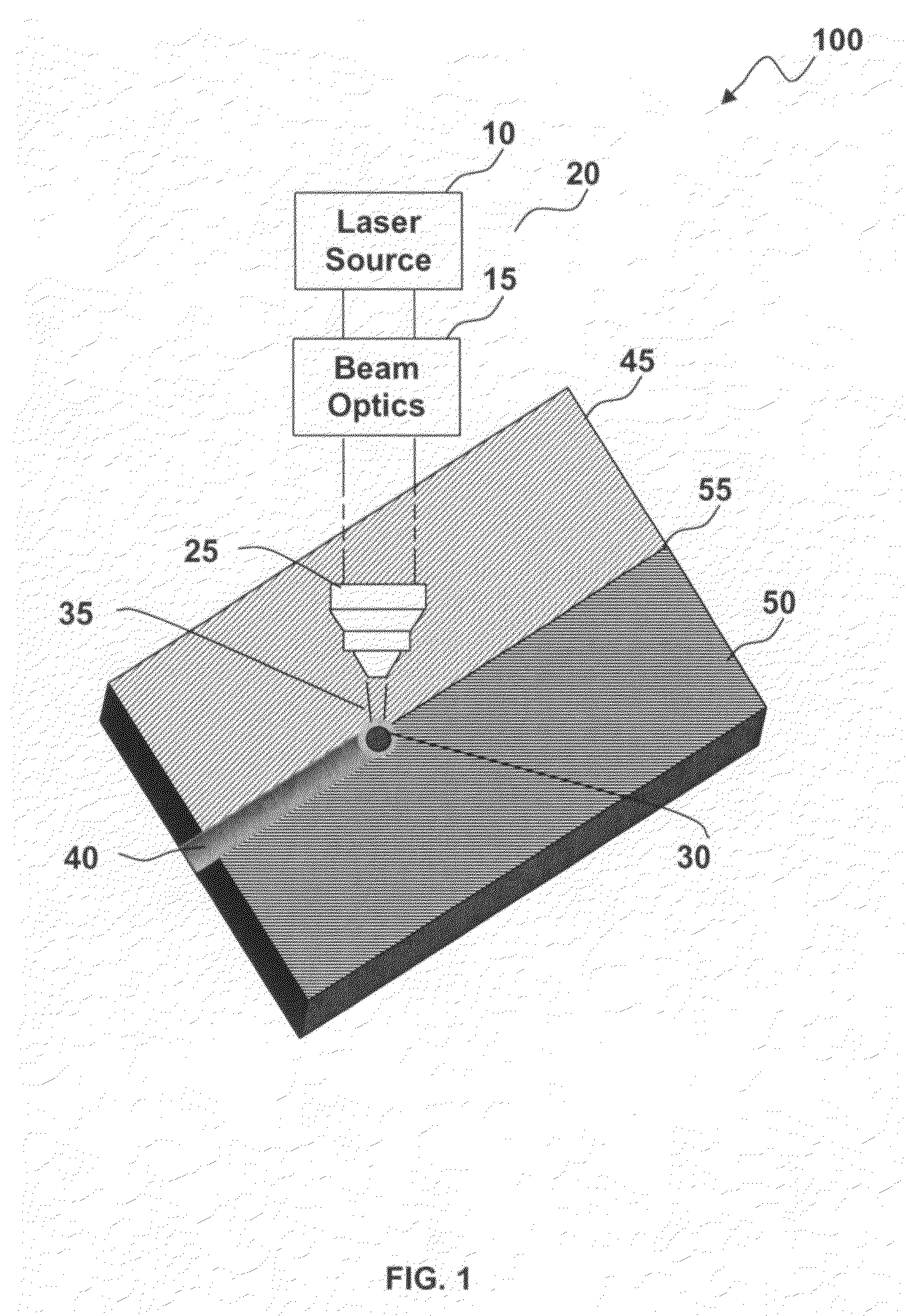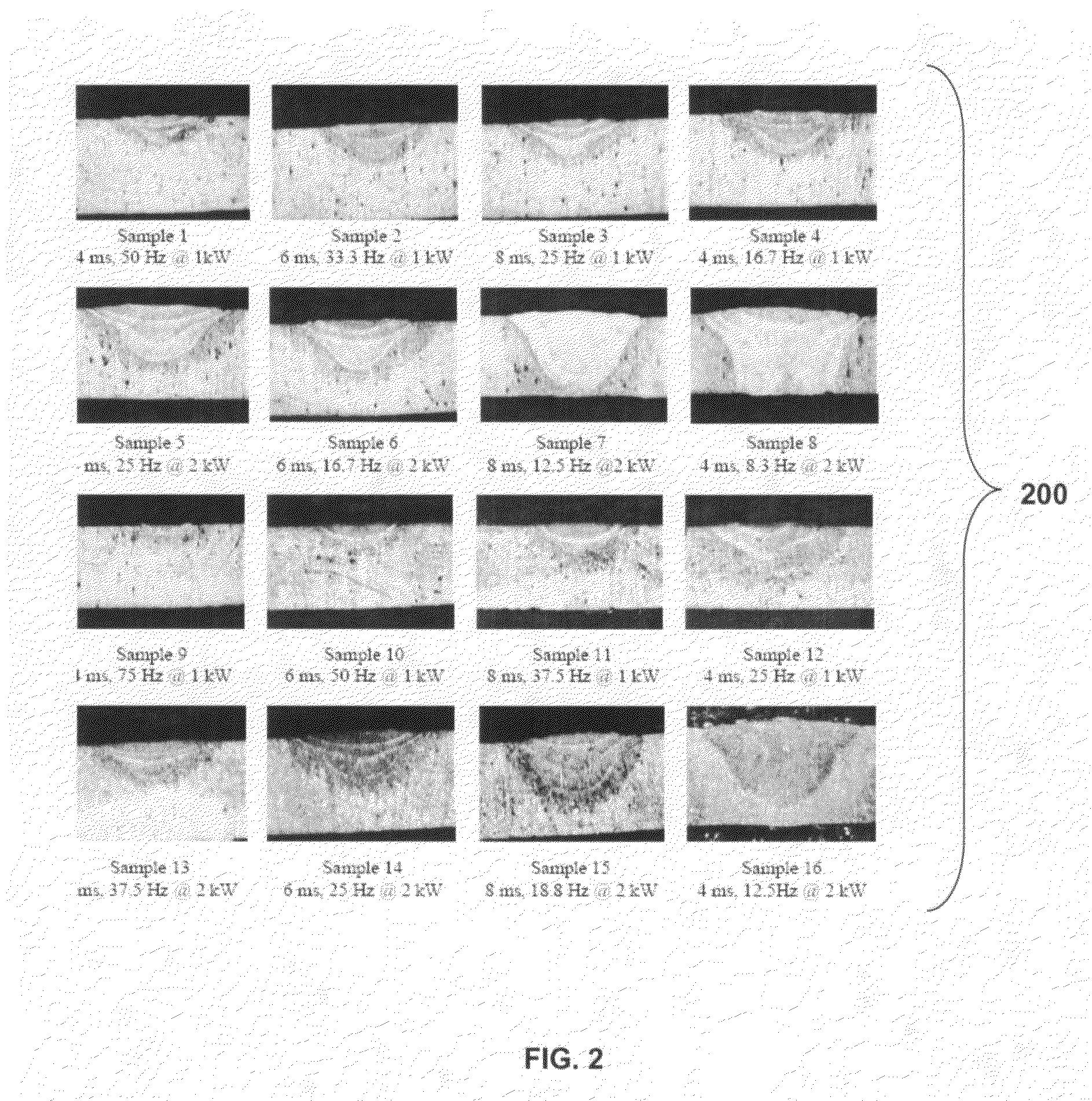Button attachment method for saw torque sensor
a technology of torque sensor and button attachment, which is applied in the direction of manufacturing tools, instruments, welding/soldering/cutting articles, etc., can solve the problems of high assembly cycle time, high product cost, and unsuitable high-volume production of adhesives, so as to improve flexibility in design and production, the effect of high power density and low energy-input process
- Summary
- Abstract
- Description
- Claims
- Application Information
AI Technical Summary
Benefits of technology
Problems solved by technology
Method used
Image
Examples
Embodiment Construction
[0021]The particular values and configurations discussed in these non-limiting examples can be varied and are cited merely to illustrate at least one embodiment and are not intended to limit the scope thereof.
[0022]Laser welding has gained considerable acceptance in the automotive industry because it provides several advantages over other joining processes. Benefits include high productivity, good flexibility, and low maintenance and energy costs along with the ability to produce strong welds. Metal to metal joining requirement of automotive industry are particularly well suited to the laser joining process. Laser welding is usually done without filler metals and the joint clearance should be maintained as close as possible (maximum 100 micron gap allowed).
[0023]Referring to FIG. 1 a perspective view showing a joint condition of two dissimilar materials when laser welding 100 is performed is illustrated, which can be implemented in accordance with a preferred embodiment. A first mat...
PUM
| Property | Measurement | Unit |
|---|---|---|
| temperature | aaaaa | aaaaa |
| temperature | aaaaa | aaaaa |
| temperatures | aaaaa | aaaaa |
Abstract
Description
Claims
Application Information
 Login to View More
Login to View More - R&D
- Intellectual Property
- Life Sciences
- Materials
- Tech Scout
- Unparalleled Data Quality
- Higher Quality Content
- 60% Fewer Hallucinations
Browse by: Latest US Patents, China's latest patents, Technical Efficacy Thesaurus, Application Domain, Technology Topic, Popular Technical Reports.
© 2025 PatSnap. All rights reserved.Legal|Privacy policy|Modern Slavery Act Transparency Statement|Sitemap|About US| Contact US: help@patsnap.com



